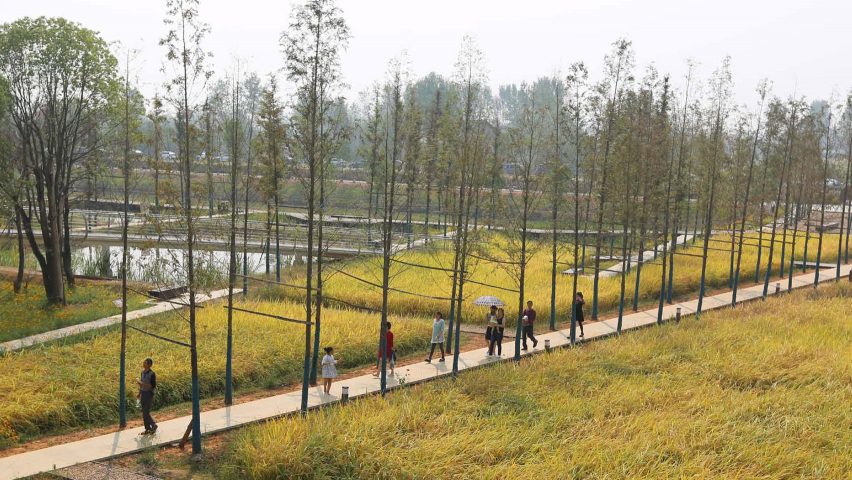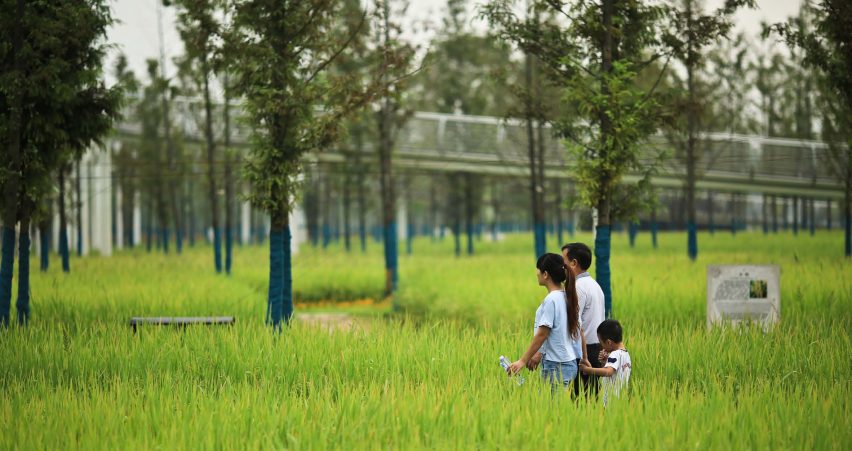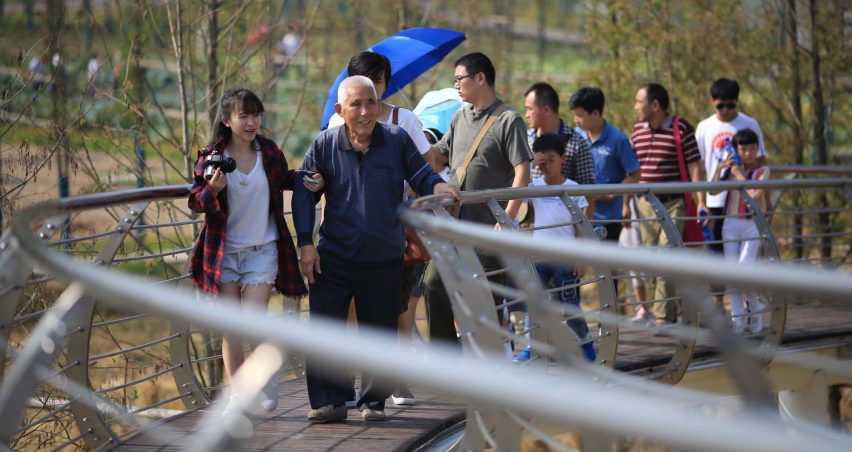
World Landscape of the Year 2017 goes to Chengtoushan Archaeological Park
A network of elevated pathways that takes tourists through paddy fields and over an 6,500-year-old archaeological site in China's Hunan Province has received the title of World Landscape of the Year 2017 at the World Architecture Festival awards.
Chinese landscape and architecture firm Turenscape designed the pathways to attract visitors to the archaeological site and surrounding agricultural land surrounding the Neolithic settlement in Chengtoushan.
Billed as "an outdoor museum of rice", a network of pathways weave through the paddy fields, with a glass bridge lifting tourists four metres above the dig site to provide an ideal vantage point for photographs.
The glazed bridge and walkways with slatted balustrades are designed to ensure sunlight permeates to the crops below, where tourists can also observe farmers at work.

"This project reflects a hopeful and creative mixture of archeological history, rise production and accepts the role of tourists in local production," said the judges.
"Rice growing by local peasant farmers is also preserved as an ongoing production activity."
The project was selected by this year's Super Jury, which is chaired by James Timberlake of Kieran Timberlake. OMA partner Ellen van Loon, WOHA founder Mun Summ Wong, Ian Ritchie of Ian Ritchie Architects and Christoph Ingenhoven of Ingenhoven Architects completed the panel.

Turenscape was also the recipient of the 2015 edition of the award for transformation of a wetland park in Zhejiang Province through a series of meandering causeways.
The World Architecture Festival awards aim to showcase the best architecture of the last 12 months.
Last year the title was awarded to a series of stormwater wetlands on the outskirts of Auckland by New Zealand practice Isthmus.
Dezeen is media partner for both the World Architecture Festival and Inside, which concluded today at the Arena Berlin, in Germany.